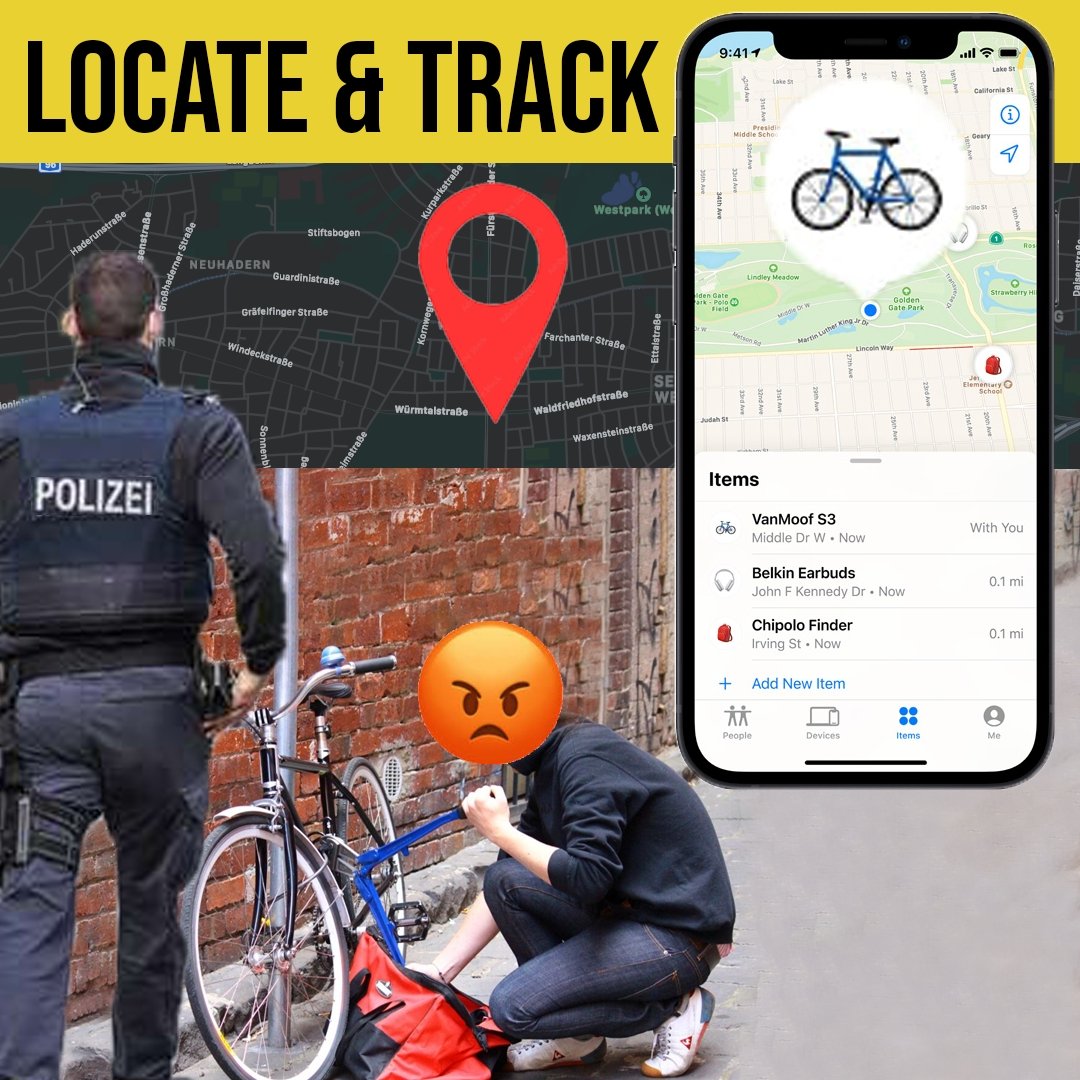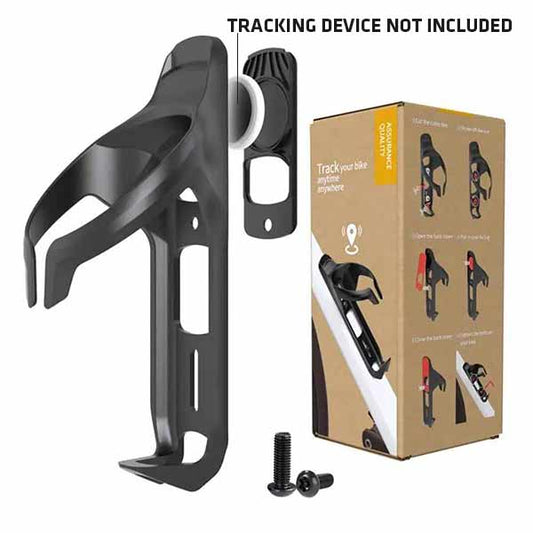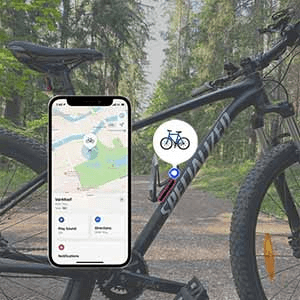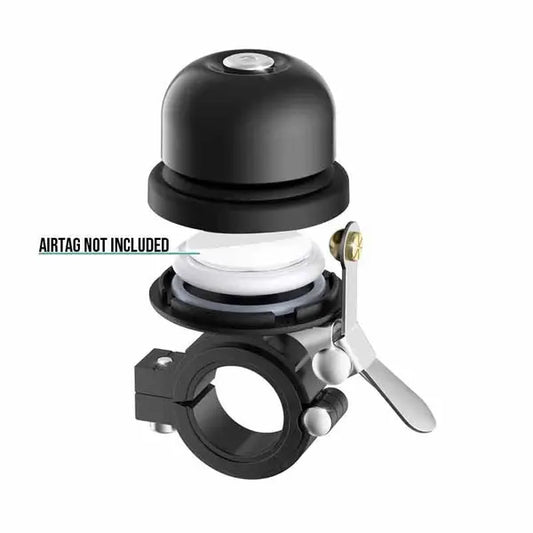What to Do Immediately After Your Bike Gets Stolen
Bike theft is an unfortunate reality for cyclists worldwide, with thousands of bikes disappearing daily from homes, garages, and public places. Knowing exactly what steps to take right after discovering your bicycle is missing can significantly increase your chances of recovery and minimize financial loss. This comprehensive guide explains what to do immediately after your bike is stolen, how to leverage modern tools, registries, and insurance, and how to protect yourself in the future.
To further understand bike theft prevention and how modern technology like locks and AirTags can help, see Bicycle theft is a common problem, but with the right tools and measures in place, it can be prevented...
Stay calm and act quickly: the first steps after bike theft
Discovering your bicycle has vanished can trigger a wave of panic and frustration. However, those first moments are critical for maximizing your chances of recovery.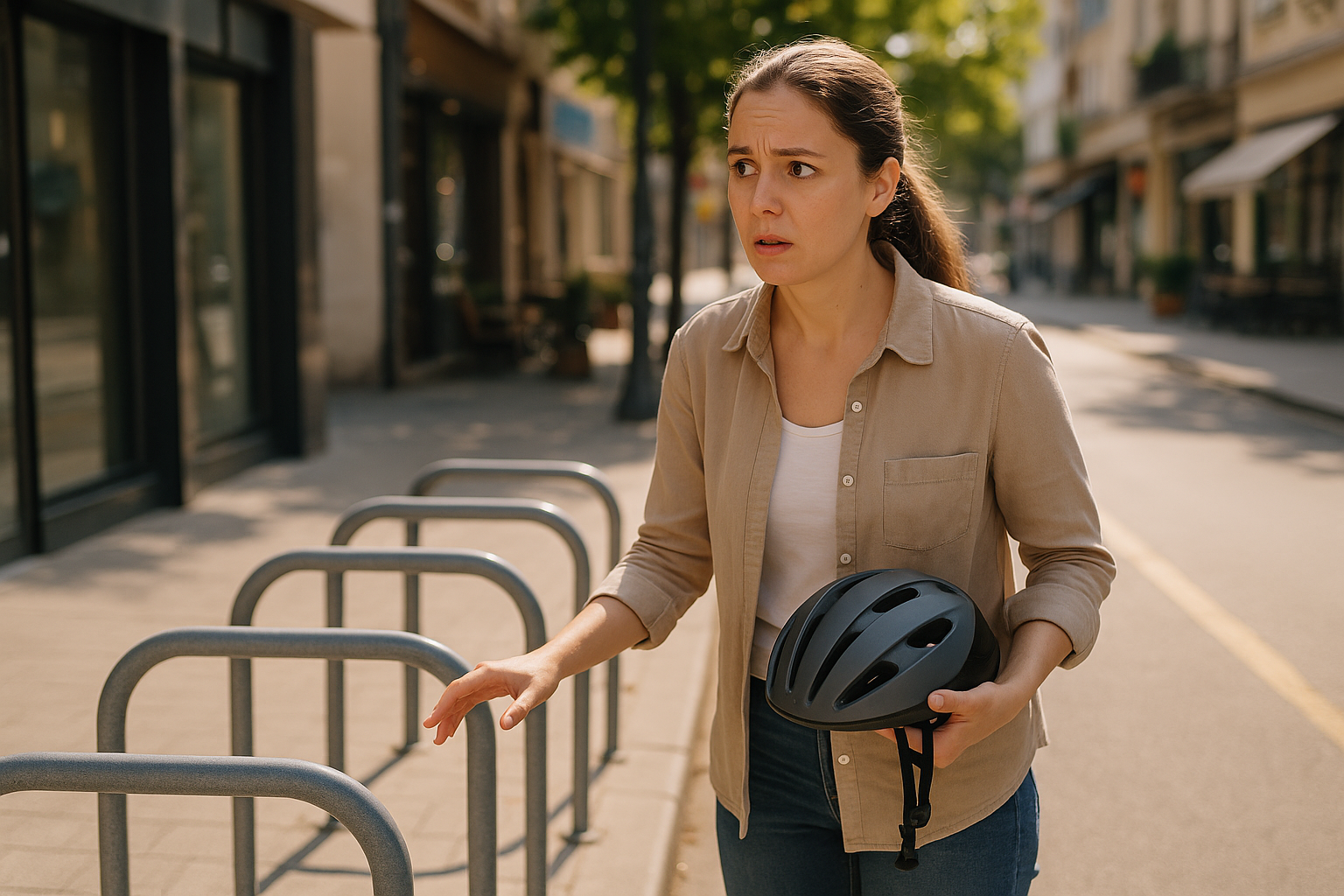
Taking structured action rather than succumbing to despair gives you the best opportunity to see your two-wheeled companion again.
Retrace Your Steps & Gather Details
Before concluding theft has occurred, thoroughly check the area where you left your cycle. Sometimes what appears to be theft might be a case of misremembering where you parked or a well-meaning security guard moving your ride to a designated area.
- look for any security cameras that might have captured the incident
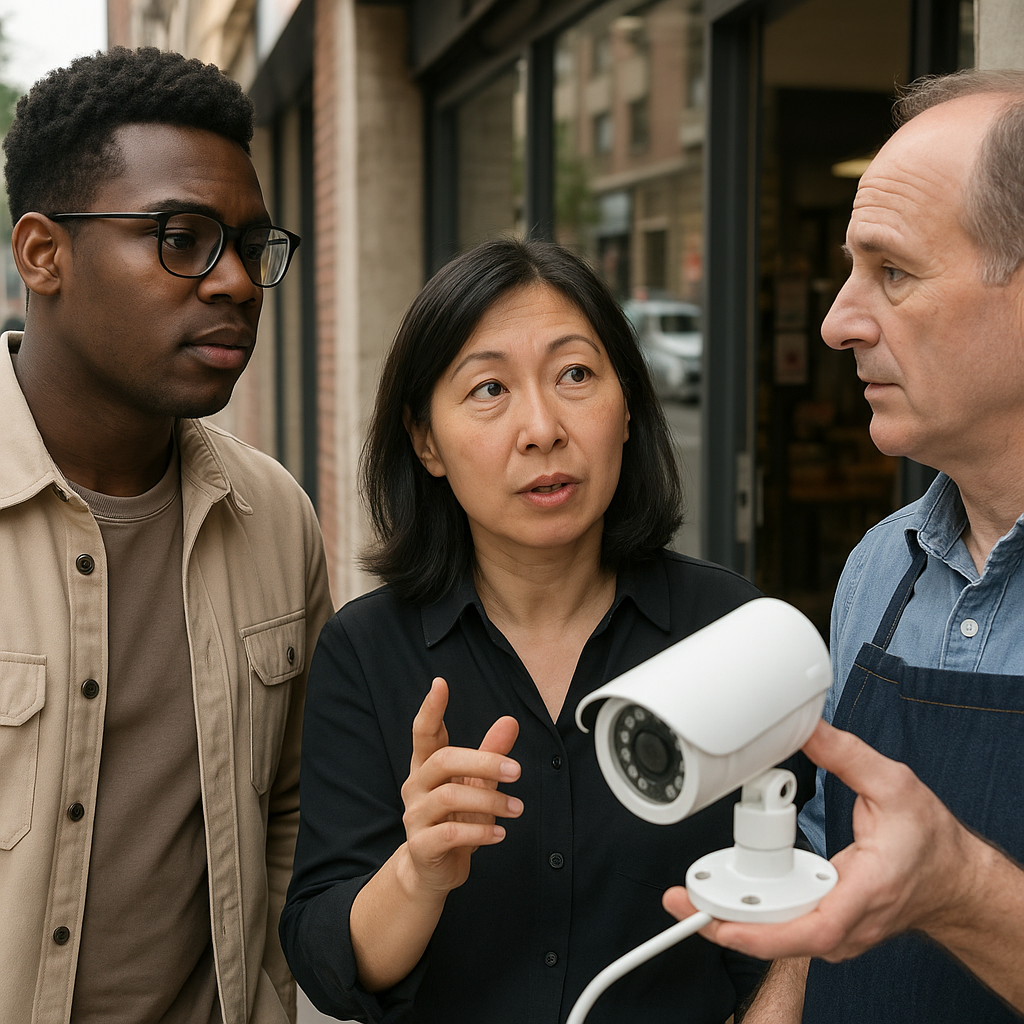
- ask nearby businesses if they witnessed anything suspicious
- note the exact time you discovered the theft
- collect any physical evidence left behind (cut locks, etc.)
- locate your bike's serial number, purchase receipts, and photographs
Documentation is crucial at this stage. The more specific information you can gather about your bicycle—color, make, model, distinguishing features, aftermarket additions—the better your chances of recovery.
Secure the Scene and Notify Others
If your transportation was taken from your home, workplace, or apartment building, immediately assess whether other valuables or bicycles are at risk. This is especially important if the theft suggests the culprit has access to your property.
- inform household members about the incident
- alert building management or workplace security
- check if neighboring vehicles or property were also targeted
- secure remaining bicycles with additional locks
For thefts from communal storage areas, notify other cyclists in the facility so they can take extra precautions with their own property.
Reporting the theft: police & official procedures
Filing an official report creates a documented record of your stolen property, which is essential for both potential recovery and insurance claims.
How to File a Police Report
Police departments typically offer multiple ways to report bicycle theft. The process varies by location, but generally includes these options:
-
In-person reporting: Visit your local police station with all documentation about your cycle
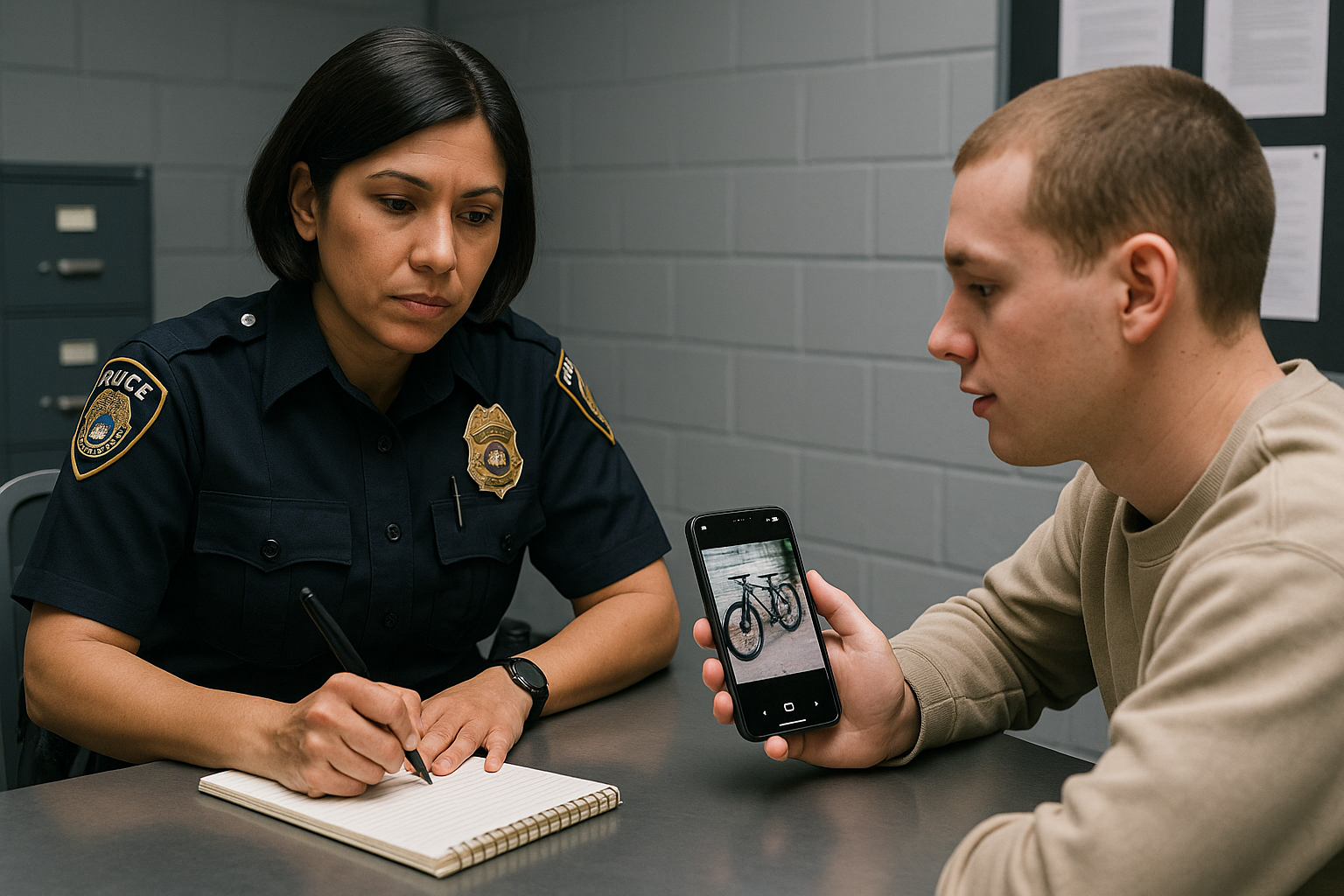
- Online reporting: Many departments have online portals for non-emergency theft reports
- Phone reporting: Some jurisdictions accept reports via non-emergency police lines
When filing your report, provide as much detailed information as possible:
- serial number (typically found under the bottom bracket)
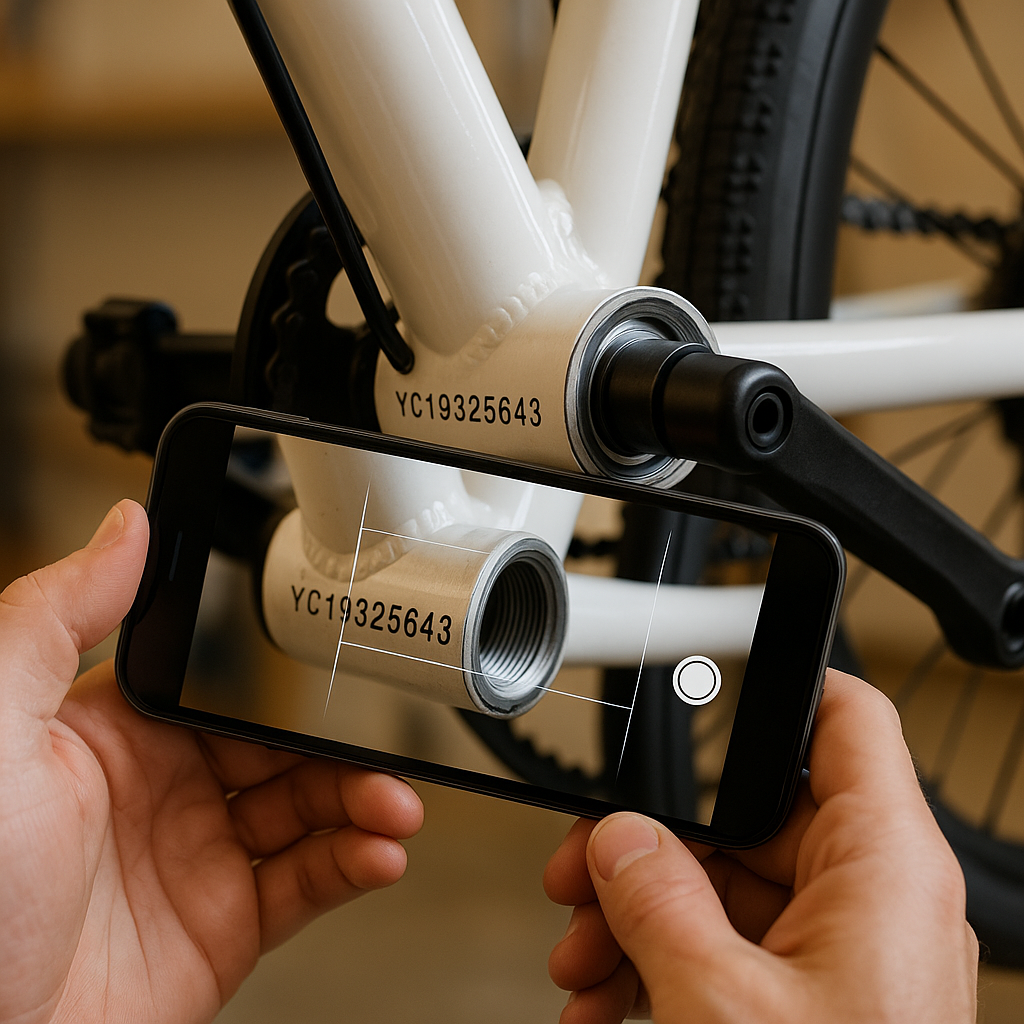
- make, model, and year of manufacture
- color and frame size
- distinctive features or modifications
- approximate value with supporting documentation
- photos of your bicycle
- exact location, date, and time of theft
- description of how the theft occurred
Most importantly, request a case number or crime reference number. This identifier is crucial for following up on your case and will be required by insurance companies.
What to Expect After Reporting
Understanding the reality of bicycle theft investigations helps manage expectations. While police take these reports seriously, resource limitations mean recovery rates vary significantly by location.
- most departments enter stolen bicycle data into national databases
- officers may check local pawn shops and known resale locations
- recovery efforts typically focus on identifying theft patterns rather than individual cases
- investigations intensify if surveillance footage or clear suspect information exists
Your police report serves multiple purposes beyond immediate recovery efforts. It creates an official record that your property was stolen (not lost or abandoned), which is essential for insurance claims. It also contributes to crime statistics that help departments allocate resources to high-theft areas.
Consider proactively securing your bikes with advanced trackers. By integrating AirTag technology into a hidden bike mount as discussed in Outsmart bike thieves: the hidden power of AirTag mounts for cyclists, you can aid both recovery and identification.
Maximizing your recovery odds: tools, registries, & community networks
Modern technology and community resources significantly increase your chances of locating a stolen bicycle beyond what official channels alone can provide.
Register Your Bike as Stolen
National and international bicycle databases create a powerful network for identifying and recovering stolen cycles:
- Bike Index: A non-profit registry used by cyclists, shops, and police departments worldwide
- 529 Garage: Community-powered registration system with theft alerts
- Project 529: Registry with mobile app functionality for easy reporting
- Local registries: Many cities maintain their own databases
When registering your stolen property, you'll typically need:
- serial number
- photos from multiple angles
- detailed description
- police report number
- contact information (only visible to administrators)
These registries create digital "wanted posters" that help community members, shop owners, and law enforcement identify your bicycle if it appears for sale or service.
Monitor Online Marketplaces and Second-Hand Stores
Many stolen bicycles quickly appear for resale online or in physical locations. Creating a systematic monitoring plan increases your chances of spotting your property:
- set up saved searches with notifications on platforms like Facebook Marketplace, eBay, Craigslist, and OfferUp
- expand search parameters to neighboring cities (thieves often sell items outside their immediate area)
- search using both specific terms (exact model) and generic terms (bike type, color)
- check listings daily, focusing on newly posted items
- visit local pawn shops and flea markets with your bicycle's information
- alert local cycle shops with your details, as thieves sometimes bring stolen bikes in for service
If you locate your stolen bicycle, do not confront the seller directly. Contact the police with the listing information and your case number to arrange a safe recovery.
Use Technology to Track and Prevent Theft
Modern tracking technology offers powerful tools for locating stolen property:
- GPS trackers designed specifically for bicycles
- Bluetooth trackers like Apple AirTags or Tile devices
- cellular-based tracking systems with subscription services
If your bicycle already had a tracker installed, immediately activate tracking features through the associated app.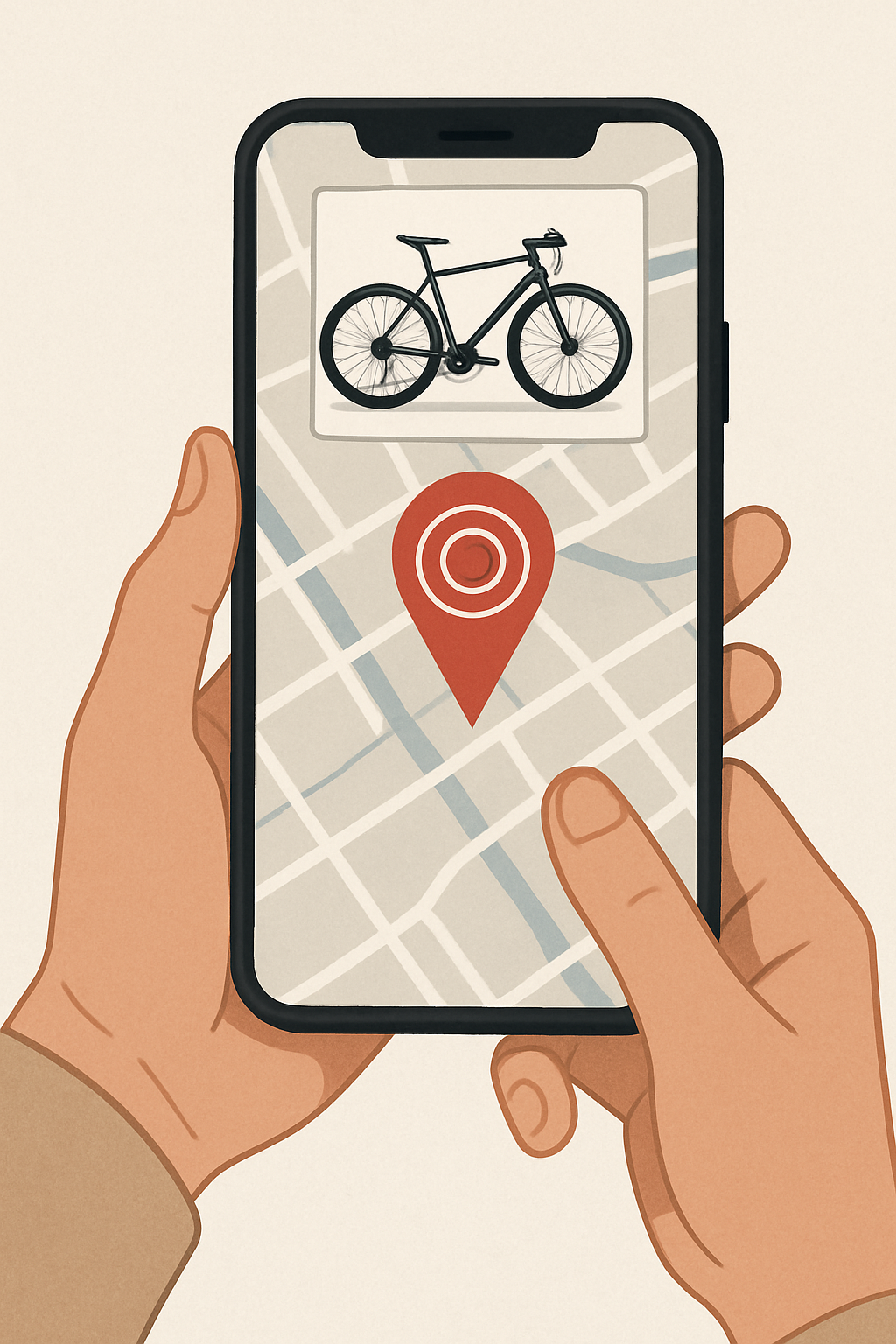
For AirTag users, enable Lost Mode to receive location updates when your tag comes within range of Apple devices.
Discuss benefits of discreetly securing AirTags, referencing This bottle cage not only securely holds my water bottle but also does an excellent job concealing the AirTag... as a practical solution for post-theft tracking or as a proactive protection measure.
When using tracking technology, understand the legal limitations—you can provide location information to police, but should not attempt recovery without proper authorities present.
Insurance claims and financial recovery
If recovery efforts prove unsuccessful, insurance provides a financial safety net to replace your stolen property.
How to File an Insurance Claim
Start the claims process as soon as possible after filing your police report. Different policies have varying requirements, but most follow a similar procedure:
- notify your insurance company immediately (many have time limitations for claims)
- provide your police report number
- submit proof of ownership (receipts, photos, maintenance records)
- document the value of your bicycle and any accessories
- complete all required claim forms
- follow up regularly until resolution
Depending on your coverage type, your bicycle might be protected under different policies:
- Homeowner's insurance: Often covers bicycles, but with deductibles and potential limits
- Renter's insurance: Similar to homeowner's but for tenants
- Specialized bicycle insurance: Dedicated coverage often with better terms for cyclists
- Personal article policies: Specific coverage for high-value items
Review your policy details carefully—some only cover theft from your residence, while others protect your possessions worldwide.
What to Do If You're Not Fully Covered
Many cyclists discover after a theft that their coverage has limitations:
- high deductibles that make claims impractical for lower-value bikes
- sub-limits for sporting equipment (often $1,000-$2,000)
- depreciation calculations that reduce payouts significantly
- exclusions for thefts outside the home
If your current policy doesn't adequately cover your loss, consider these options for future protection:
- add a personal articles floater to your existing policy
- obtain specialized bicycle insurance from companies focusing on cyclists
- adjust coverage limits on your homeowner's or renter's policy
- consider replacement cost coverage instead of actual cash value
Document your new bicycle thoroughly—photograph the serial number, keep receipts, and register it immediately with manufacturer and theft prevention databases.
Spread the word: community and social media mobilization
The cycling community represents a powerful network that can significantly increase recovery chances through collective awareness.
Strategies for Getting the Word Out
Social media platforms create instant visibility for your stolen bicycle:
- Facebook: Post in local cycling groups, community pages, and marketplace groups
- Instagram: Use location-specific hashtags and tag local cycling accounts
- Nextdoor: Alert neighbors who may spot your bicycle nearby
- Twitter: Tag local cycling advocacy groups and bike shops
- Reddit: Post in your city's subreddit and cycling communities
For effective social posts, include:
- clear, recognizable photos from multiple angles
- specific details about unique features
- location and approximate time of theft
- contact information (email or dedicated phone number)
- police report number to establish legitimacy
- request for shares rather than just sympathy
Beyond social media, consider physical notifications in strategic locations:
- create flyers with your bicycle's photo and contact information
- distribute to local cycle shops, who often act as community hubs
- post notices near the theft location and popular cycling areas
- ask coffee shops frequented by cyclists to display your notice
For a deeper look at real-world anti-theft strategies and securing your bike against future thefts, see Bicycle theft is a common problem, but with the right tools and measures in place, it can be prevented...
Preventing future bike theft
After experiencing theft firsthand, implementing comprehensive prevention strategies becomes a priority for avoiding repeat incidents.
Locking Best Practices & Technology Upgrades
Your locking strategy forms the primary defense against opportunistic thieves:
- Use quality locks: Invest in hardened U-locks, heavy-duty chains, or folding locks
- Apply the 3-10% rule: Spend 3-10% of your bicycle's value on security
- Practice proper technique: Lock frame and wheels to immovable objects
- Use multiple locks: Combine different lock types for layered security
- Choose locations wisely: Park in high-visibility areas with surveillance
Modern technology enhances traditional security:
- smart locks with tamper alerts and tracking capabilities
- hidden trackers in frame tubes or components
- alarm systems triggered by movement
- tracking devices concealed within the bicycle structure
Even at home, where many thefts occur:
- secure bicycles inside garages and sheds with ground anchors
- keep valuable models out of sight from windows
- maintain security habits even for "quick stops"
Registering and Documenting Your Bikes
Proactive documentation dramatically improves recovery odds if theft occurs:
- register with national databases like Bike Index before theft occurs
- photograph your serial number and frame details
- create a "bicycle passport" with identifying information
- mark your bicycle with identifiable features (UV pens, micro-dots)
- keep purchase receipts and warranty information
- update registration when making significant component changes
To stay ahead of smart thieves, consider upgrading your security setup with an AirTag bike saddle mount, which makes discreet tracking simple and effective.
Conclusion
When your bicycle disappears, immediate action is crucial. Begin by thoroughly documenting the theft scene, filing a police report, and registering your bicycle in stolen property databases. Leverage technology through tracking devices and community networks through social media to extend your search capabilities. Simultaneously, initiate the insurance process to mitigate financial loss.
While recovery isn't guaranteed, following these steps maximizes your chances while creating a foundation for better security in the future. Invest in quality locks, tracking technology, and thorough documentation for any new bicycles. Remember that most recoveries happen through a combination of official channels, community awareness, and technological tools working together.
Bicycle theft is jarring, but with systematic response and prevention strategies, you can navigate the aftermath effectively and better protect your future investments in cycling equipment.
Frequently Asked Questions
Can I recover my bike if I didn't record the serial number?
While it is harder without a serial number, reporting unique features, photos, and proof of ownership still helps. Register your stolen bike on databases and alert shops/community—sometimes other evidence suffices for recovery.
Will my homeowner's or renter's insurance cover my stolen bike?
Many policies do, but check for deductibles and sub-limits for bicycles; supplemental or specialty bike insurance may offer better coverage, especially for high-value bikes or bikes stored outside the home.
Is it safe to confront someone suspected of stealing my bike?
Police and experts do not recommend direct confrontation—it can be dangerous. Always involve law enforcement and provide evidence if you locate your stolen bicycle.
What's the most effective way to prevent future bike theft?
Combine high-quality locks (U-locks, double-locking), concealed tracking devices like AirTags, secure storage, and registration with online registries to maximize deterrence and recovery odds.
How can I use technology like AirTags to help protect my bike?
By installing an AirTag in a hidden mount on your bike, you can discreetly track its location and provide real-time updates to authorities, making recovery more likely if theft occurs.
